IntMath Newsletter: First principles applet, resources
By Murray Bourne, 28 Nov 2017
28 Nov 2017
In this Newsletter:
1. New applet: Calculus first principles
2. Resource: ImmersiveMath
3. Math in the news: Proof School, GPU problem solvers
4. Math movie: Inspiration
5. Math puzzle: Intersecting parabolas
6. Final thought: Tenants
1. New applet: Calculus first principles
Sometimes the early concepts (usually called "first principles") of calculus can be a bit confusing.
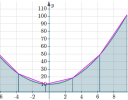 |
This new applet allows you to explore the concepts of differentiation and integration from first principles. |
2. Resource: ImmersiveMath
This is "the world's first linear algebra book with fully interactive figures".
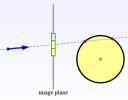 |
Immersive Linear Algebra contains some excellent animations and manipulatives that will help you to understand vectors, dot products, matrices, and determinants. |
The pages take a while to load, but it's worth it!
3. Math in the news:
(a) Proof School
A few years back I did some mathematics curriculum consultancy work for the newly-established School of Science and Technology, Singapore. Their approach is to incorporate various technologies into an interdisciplinary mix of art, design, media and environmental studies, on top of the national curriculum. I was reminded of that experience when I came across this article on Proof School, in California.
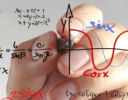 |
Proof School is designed for "students who love math". Here is some background about the school, which has roots in the "math circle" concept, where kids can feel comfortable in a supportive and challenging math environment: |
(b) Innovative approach to solving massive problems on an ordinary PC
Russian scientists realized that if they used the GPU (graphics processor unit) of an ordinary PC, they could solve "260 million complex double integrals on a desktop computer within three seconds only". The best a supercomputer can achieve when solving the same problems is 2 to 3 days - and at a much greater expense.
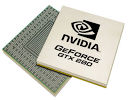 |
The GPU used a Nvidia GPU designed for use in game consoles. See: Russian scientists use a PC to solve complex problems tens of times faster than a supercomputers |
4. Math Movie: Exceptional teachers
(This is a bit late for last month's Teachers' Day, but still...)
Here's Stephen Hawking talking about his inspirational mathematics teacher:
"I have to admit – I wasn’t the best student – but with Dikran Tahta's support I became a professor of mathematics at Cambridge, in a position once held by Isaac Newton."
 |
See the short video: |
5. Math puzzles
The puzzle in the last IntMath Newsletter asked about different formulas for producing a given sequence of numbers.
Correct answers with explanation were provided by Phil, Karam and Chris.
New math puzzle: Intersecting parabolas
A quadratic graph with vertical axes has the general form:
y = ax2 + bx + c
Two parabolas with vertical axes can intersect in at most 2 points.
Now, consider the following graph. Here, I've rotated one of the parabolas:
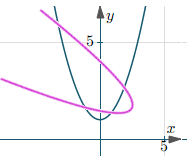
The equation of that rotated parabola has the form:
Ax2 + Bxy + Cy2 + Dx + Ey + F = 0
We can see the two parabolas intersect in 4 points, which is the maximum number of intersection points.
Or is it?
How is it possible for the coordinates of the five points (−1, 6), (3, −2), (1, 1), (0, 4) and (2, 0) to satisfy both of these quadratic equations?
2x2 − xy − y2 − 4x + 4y = 0
6x2 + xy − y2 − 16x + 2y + 8 = 0
You can leave your responses here.
6. Final thoughts: Tenants

Here's an apt quote from Rose Bird, Chief Justice of the California Supreme Court:
"We have probed the earth, excavated it, burned it, ripped things from it, buried things in it, chopped down its forests, leveled its hills, muddied its waters, and dirtied its air. That does not fit my definition of a good tenant. If we were here on a month-to-month basis, we would have been evicted long ago."
[Hat-tip to PiPo for alerting me to some of the items in this Newsletter.]
Until next time, enjoy whatever you learn.
See the 12 Comments below.
29 Nov 2017 at 4:22 pm [Comment permalink]
I'm sorry, Dave. I'm afraid I can't do that.
Something messed up. :-(